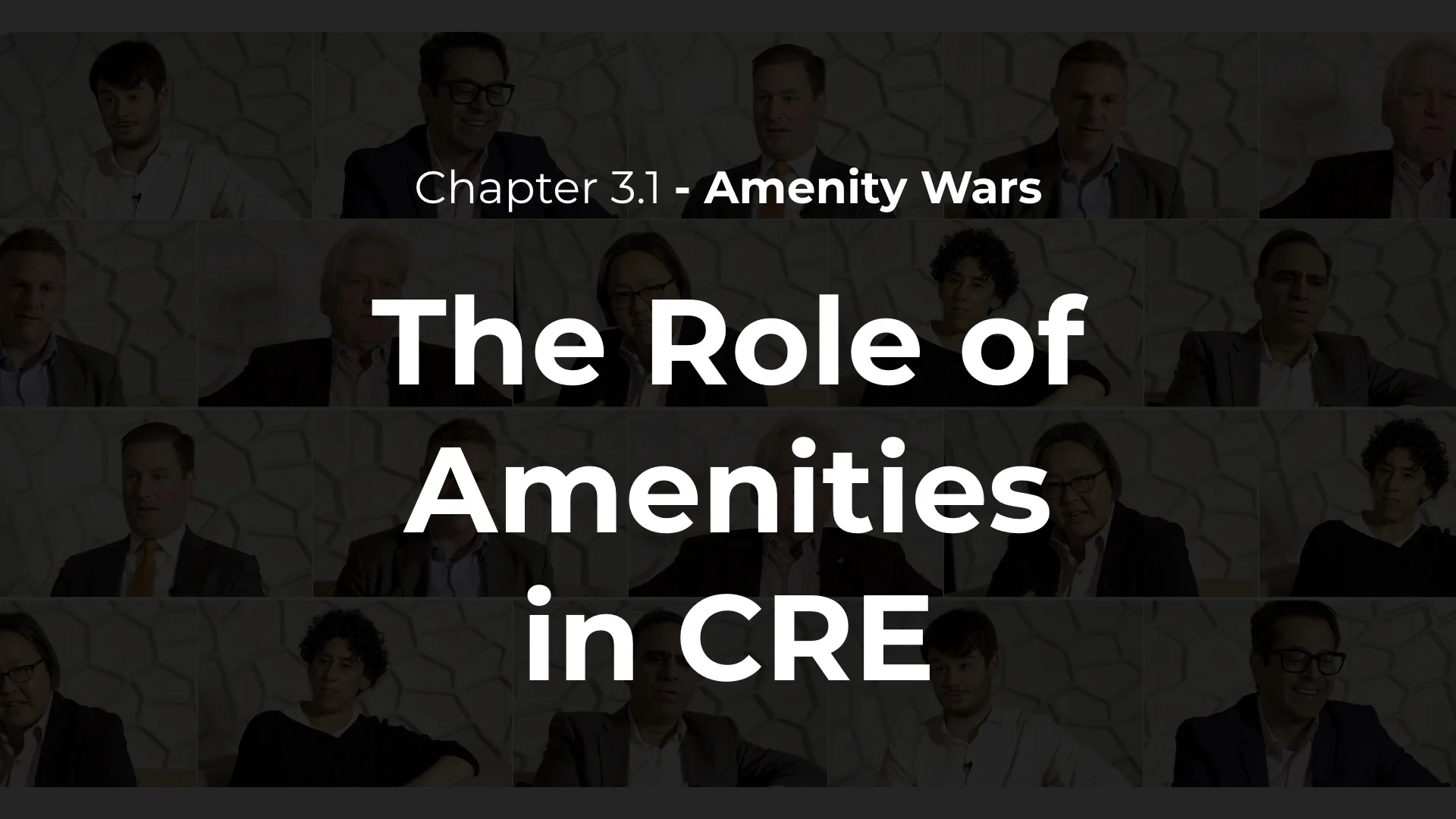Inside CRE Tech • Episode 3.1
The Role of Amenities in CRE
Read Transcript:
John Gilbert, EVP, COO, CTO, Rudin Management
I think it's becoming more and more important. I think if you would have asked me that question ten years ago, it would have been not so much, two years ago, a lot more, and today, really a lot more.
Jack Sibley, Technology & Innovation Strategies, TH Real Estate
I think generally, we've seen a big growth of interest in this area from tenants. Whether that's events like putting yoga on, whether it's just having a better place to work in terms of the quality and finish in the lobby, or having art in the lobby is becoming much more popular.
Hussain Ali-Khan, Global Alliance Director, CBRE
You know the role of amenities in CRE over the last 10 years is part of the war for talent, right. It's one of the weapons one of the tools that people who are trying to attract the best talent are using to: 1) attract it and 2) retain it. I mean there are plenty of organizations that understand that creating the gilded cage can be a very compelling retention strategy. And I'm not really sure what the differential is, like how much would a person need to get paid to give up the gilded cage, so to speak? Right. And I'm not sure it even comes back to money. I think it'll probably come back to opportunities, because talent will go where the opportunities is where the upside is. I think amenities have made a tremendous impact in…
Gabrielle Rubin Deveaux, Global Real Estate & Facilities, Buzzfeed
I think amenities have made a tremendous impact in the retention and recruitment for employees because I think they care more about that than they care about to their title or even their salary.
Kent Tarrach, VP, Asset Management & Global Corporate Development, Brookfield
Amenities have become increasingly important over the past number of years with commercial real estate. The reason for that is because of tenants looking towards the owner or the landlord as being partners in talent attraction and talent retention.
Hussain Ali-Khan, Global Alliance Director, CBRE
Smart companies are using amenities, and I'm talking about food service, meeting space, concierge type services, valet parking. All of these types of things are tools to 1) engage tenants and workers but 2) to also intensify the use of the asset.
Tama Huang, Chief Innovation Officer, CohnReznick
When it comes to amenities, we also have to understand that this there are generational shifts, right. So when you have boomers in your building versus Gen Xers, or even Gen Z, their requirements are going to be different, their expectations are going to be different. And I think that from an amenity mix perspective, we need to hit this both horizontally to appeal to a great diversity of people, as well as vertically from a from a generational perspective.
Kent Tarrach, VP, Asset Management & Global Corporate Development, Brookfield
Previously our experience with tenants was that we would see them when they walk through our building lobby and that would that would be the end of it. And today there is this expectation that we need to provide a much higher level of amenities and services to allow those tenants to compete with some of their peers in the attraction of their talent.
Tama Huang, Chief Innovation Officer, CohnReznick
I think that we have to get more granular. We have to get more custom. First and foremost, I think that we're realizing that there's great diversity great diversity in terms of people in office buildings great diversity in terms of people in our residential buildings. And it is that diversity that we know need to tailor too.
Kent Tarrach, VP, Asset Management & Global Corporate Development, Brookfield
What that has prompted is us to get increasingly creative into what kind of amenities we need to put into our buildings. So that's that's a learning process as we go on, but it's forced us to continue to evolve our thinking and improve the experiences that we're providing for building occupants.
John Gilbert, EVP, COO, CTO, Rudin Management
Most important in terms of a building is the experience, is how I feel when I walk into a space. Do I feel welcome? Do I feel like I want to run out the door? Do I ultimately know that the data, my data halo that I'm bringing with me into that building is integrating with ultimately the data halo of the building itself.
Adam Stoltz, National Director, Consulting Services - Transwestern
The amenities war has certainly made a lot of buildings that previously looked or behaved differently, look and behave very much the same. This amenities war is almost driven to the point where now starting to look at things like service as an amenity, not space as an amenity, because a service can be more distinguishable than saying well there's a renovated lobby over here, and a roof deck over here, and a conference center over here… Most buildings have that, and so it's harder and harder to distinguish one asset from another just based on space alone.
John Gilbert, EVP, COO, CTO, Rudin Management
It's all about attracting and retaining that spirit of understanding and that spirit of experience that makes me want to be in this building.



